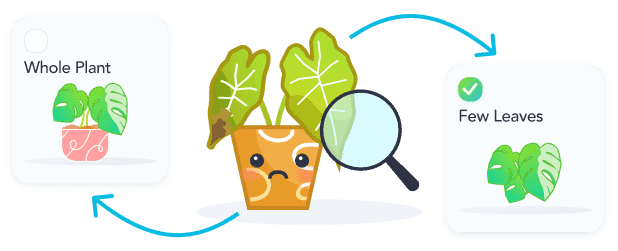Every 7d
Recommended Frequency
1 /2 cup of water
Recommended Amount
Water your Creeping Fig once a week during spring and summer, giving it time for the soil to dry out between watering. When it reaches the colder months, you don't have to water as much.
Every 30d
Recommended Frequency
Fertilize your Creeping Fig once a month during spring and summer using a liquid fertilizer. Do not fertilize in autumn and winter.
Indirect Sun
Recommended
Indirect Sun or Filtered Sun is when sun exposure is being filtered through a sheer curtain or is not able to have the sun's rays directly hit the leaves/flowers of your plant.
Every 730d
Recommended Frequency
Repot your Creeping Fig every two years, or once it outgrows its pot.
Peat Soil
Recommended Soil
Peat Soil is an acidic soil that retains a lot of moisture and slows decomposition. Due to such a high moisture retention this mix may require irrigation to help with draining. This soil type is best used when paired wit...

Shop Creeping Fig
Questions about Creeping Fig
A creeping fig plant, scientifically known as Ficus pumila, is a fast-growing, vining plant native to East Asia. It's celebrated for its lush, heart-shaped leaves and its ability to cling to and cover walls, fences, and ...

Toxicity of Creeping Fig

Common Pests and Diseases
Leaf Spot Disease
Fungal or bacterial pathogens
Leaf spot disease in creeping figs can be managed by improving air circulation around the plant and ensuring it's not overcrowded. Prune affected leaves and dispose of them properly to prevent spread. Avoid overhead watering to keep foliage dry. In severe cases, applying a fungicide or bactericide, as appropriate, following the manufacturer's instructions, can help control the disease. Regular monitoring and early intervention are key to managing leaf spot disease effectively.

Related Plants
Other Articles:
Top 10 Most Popular Roses
Mar 22, 2022
How to Care for China Roses
Mar 11, 2022
How to Care for Chinese Money Plants
May 15, 2020
How to Grow and Care for A Bird of Paradise
Apr 26, 2020
Top 10 Plants To Grow In A Terrarium
May 31, 2022
How to Grow and Care for Lucky Bamboo
Mar 29, 2022
How to Grow and Care for Corn Plants
Mar 29, 2022
How to Care for Madagascar Dragon Trees
Mar 21, 2022



